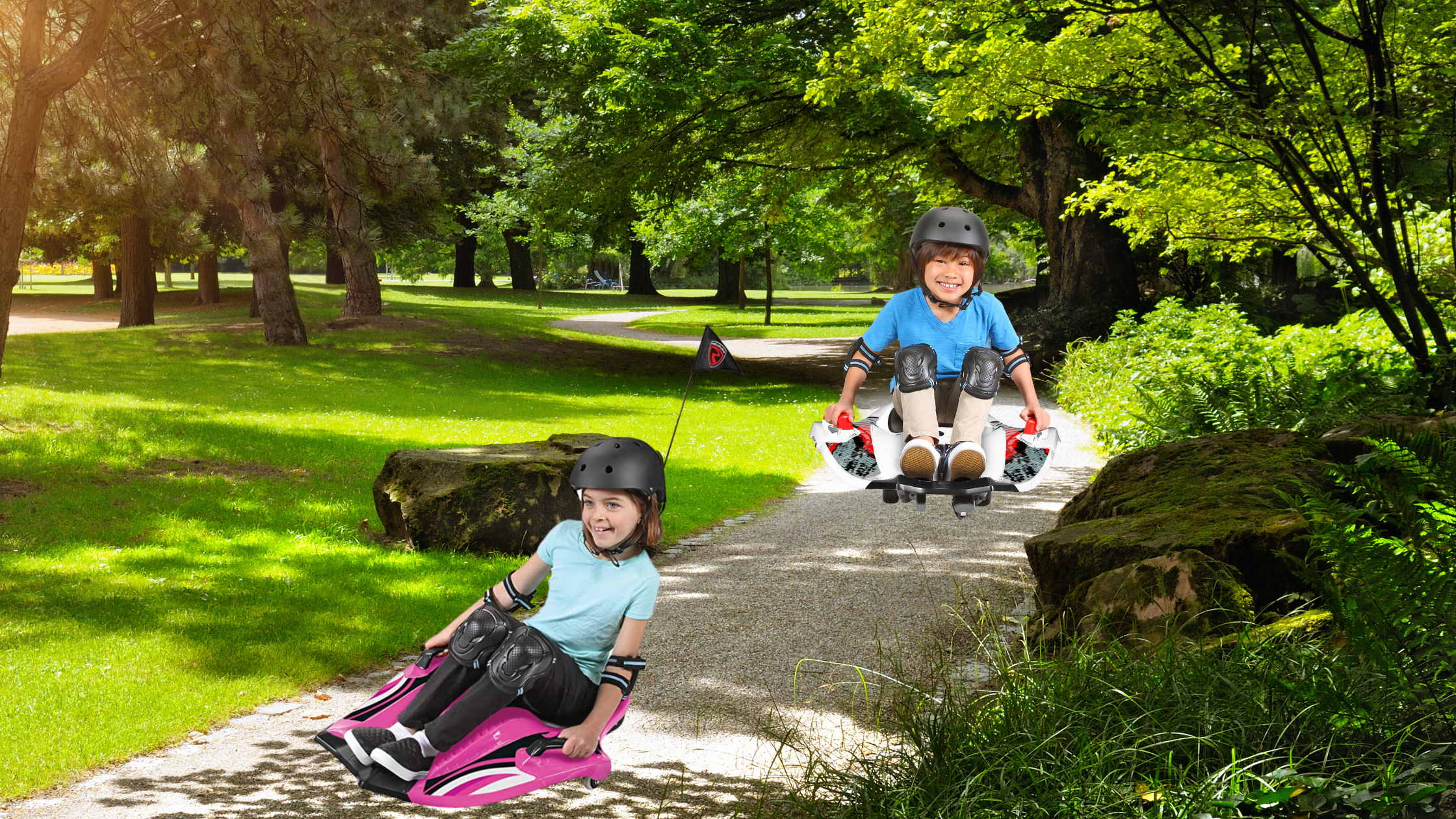Childhood is a time of exploration and growth, when children actively engage in activities that shape their physical and cognitive abilities. Among the countless options available, ride-on toys offer a unique opportunity for children to develop and master essential skills. What’s great about this skill is that it’s a lifelong benefit that’s loads of fun too!

Building Balance And Coordination
Ride-on toys, such as bikes, scooters, and cars, require children to maintain balance and coordinate their movements effectively. As children straddle these toys and propel themselves forward, they engage their core muscles, enhancing their balance and stability. The act of steering, maneuvering around obstacles, and maintaining control while in motion helps improve coordination and body awareness. These physical skills developed through ride-on toys lay the foundation for more complex activities later in life.
Steering And Control
One of the fundamental skills children acquire while using ride-on toys is steering. By turning the handlebars or manipulating the steering wheel, children learn to direct their path and navigate their surroundings. This process requires cognitive processing as they anticipate changes in terrain, adjust their speed, and make split-second decisions. With practice, children become more adept at maneuvering their ride-on toys, enhancing their spatial awareness and sharpening their problem-solving abilities.
Speed Control And Risk Assessment
Ride-on toys often offer multiple speed options, allowing children to learn about speed control and risk assessment. As they become more proficient, children gradually gain the ability to accelerate and decelerate appropriately, adjusting their speed according to the environment and their comfort level. This skill helps them understand the concept of cause and effect, as they experience firsthand how their actions impact their speed and control. By navigating various speeds, children learn to assess risks and make informed decisions to ensure their safety, promoting a sense of responsibility and independence.
Self-Confidence And Goal Achievement
The journey of skill development and mastery with ride-on toys can significantly impact a child’s self-confidence. As children encounter challenges and overcome them, whether it’s mastering balance, learning to steer smoothly, or conquering new terrains, they experience a sense of accomplishment. This cycle of setting goals, persisting through difficulties, and ultimately achieving success fosters a resilient mindset and instills the belief that they can overcome obstacles with determination and effort. These early experiences of achievement lay the foundation for a positive self-image and encourage children to embrace new challenges in other aspects of their lives.
What To Look For When Purchasing A Ride On Toy
One example of a ride-on toy is the Rollplay Nighthawk. According to one doting grandparent, “It took her a few days to get her balance right but now has mastered it and loves to play on it daily.” Look for a model that can accommodate your child for a few years. Also look for a model that is proven to be durable and has a battery that will stay charged for several hours. The best models will provide a level of learning to use the toy so that there is some form of skill building involved.
Incorporating Ride-On Toys Into Playtime
To maximize the benefits of ride-on toys, it’s important to create an environment that encourages active and imaginative play. Here are a few suggestions to incorporate ride-on toys into playtime:
1. Set up an obstacle course: Create a course in your backyard or living room using cones, hula hoops, or other objects that children can maneuver around while riding their toys. This will enhance their agility, coordination, and problem-solving skills.
2. Join a riding group: Look for local riding groups or playdates where children can ride together, learn from each other, and engage in friendly competitions. Riding with peers can further boost their social skills, teamwork, and sportsmanship.
3. Imaginative adventures: Encourage children to use their ride-on toys as vehicles for imaginative play. Whether they’re pretending to be race car drivers, firefighters, or explorers, their creativity will flourish as they incorporate storytelling into their rides.
4. Safety first: Always prioritize safety when using ride-on toys. Ensure children wear appropriate protective gear such as helmets, knee pads, and elbow pads. Teach them about traffic rules and the importance of riding in designated areas.
Hey welcome to my blog . I am a modern women who love to share any tips on lifestyle, health, travel. Hope you join me in this journey!

Speak Your Mind